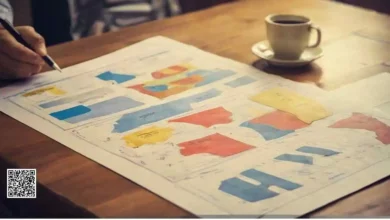What is Reverse Brainstorming Technique

Reverse Brainstorming Technique
Reverse brainstorming is a creative problem-solving technique that involves focusing on generating ideas to solve the opposite of the problem.
The origin of Reverse brainstorming is not well documented, and there is no clear information about who invented it. However, it is believed to have emerged as a variation of traditional brainstorming in the early 2000s.
Reverse brainstorming gained popularity as a problem-solving technique due to its ability to help teams break out of their traditional ways of thinking and generate unconventional solutions. It has been used in various industries, including marketing, product development, and technology, among others.
Today, reverse brainstorming is a widely accepted technique used by teams to approach problem-solving from a different angle, challenge assumptions, and encourage creative thinking. Its effectiveness has been supported by various studies and research, making it a valuable tool in the arsenal of brainstorming techniques.
How Reverse Brainstorming Technique Work?
Here’s how it works:
- Define the problem: As with any brainstorming session, it’s important to start with a clear problem statement that the group will focus on. In this case, the problem statement should be phrased in the negative, for example: “How can we decrease sales?” or “What can we do to make our customers unhappy?”
- Identify the causes: Once the problem has been defined, the group should identify the causes of the problem. For example, if the problem is “How can we decrease sales?”, the causes might include high prices, poor customer service, or ineffective marketing.
- Reverse the causes: The group should then flip each cause around and think of ways to exacerbate or amplify it. For example, if the cause of the problem is high prices, the group might focus on ways to make the prices even higher, such as eliminating discounts or raising prices even more.
- Generate solutions: Once the group has generated a list of amplified causes, they can start to brainstorm solutions to those causes. For example, if the group has identified poor customer service as a cause of decreased sales, they might come up with solutions like hiring more customer service representatives, improving training programs, or implementing a more effective feedback system.
- Evaluate solutions: As with traditional brainstorming, it’s important to evaluate each solution and determine its feasibility and potential impact. The group can then narrow down the list of solutions and choose the most promising ones to implement.
Reverse brainstorming can be a powerful technique for problem-solving because it forces the group to think about the problem from a different perspective.
By focusing on the opposite of the problem, the group is able to generate creative and unexpected solutions that they might not have considered otherwise.
Some examples of how reverse brainstorming has been used in real-world scenarios:
- In the early days of Airbnb, the founders struggled to attract new users to their platform. Instead of brainstorming ways to attract more users, they used reverse brainstorming to generate ideas for how to repel users. By thinking about what might make users not want to use their platform, they were able to identify and address potential concerns and improve the user experience.
- When the city of London was struggling with traffic congestion, they used reverse brainstorming to generate ideas for how to make the traffic even worse. By focusing on the worst-case scenarios, they were able to identify potential causes of congestion and develop solutions to mitigate them.
Reverse Brainstorming Template
- Clearly define the problem: Start by clearly defining the problem that needs to be solved. Write it down in a sentence or two.
- Identify the opposite of the problem: Identify the opposite of the problem by asking questions such as:
- What would be the worst thing that could happen?
- What would we need to do to make the problem worse?
- What are the obstacles preventing us from solving the problem?
- Generate ideas: Once you have identified the opposite of the problem, generate ideas on how to make it happen or how to solve it. Encourage team members to think outside the box and come up with unconventional solutions.
- Evaluate and select: Evaluate the generated ideas and select the ones that are most feasible and effective. Consider the resources required, the time frame, and the impact of each idea.
- Reframe the ideas: Reframe the selected ideas back to the original problem. Evaluate how they could solve the problem and make any necessary adjustments.
- Plan of action: Create a plan of action based on the selected and reframed ideas. Determine who will be responsible for executing each action step, when it will be completed, and any necessary resources.
- Follow up and evaluate: Follow up on the plan of action, evaluate the progress, and make any necessary adjustments.
Let’s see an example of Reverse Brainstorming in ACTION
Problem: How can we increase customer satisfaction with our product?
Opposite: How can we make our customers more dissatisfied with our product?
Ideas:
- Ask customers to complete a tedious and lengthy survey
- Increase the price of the product
- Remove features that customers love
- Offer poor customer service
- Deliver the product late
Reframe:
- Ask customers to complete a short and easy survey to identify areas for improvement
- Offer additional features that customers have requested
- Train customer service representatives to provide exceptional service
- Improve the product delivery time
Plan of Action:
- Develop a short survey and send it to customers
- Identify the most requested additional features and add them to the product
- Schedule customer service training sessions
- Streamline the product delivery process
Follow up and evaluate:
- Review the survey results and make necessary changes
- Monitor customer feedback on new features
- Evaluate customer service performance
- Monitor the product delivery process and adjust as necessary.
Note: This is just an example, and the ideas generated during the brainstorming session may vary depending on the problem and the team’s creativity.
To Sum up
Reverse brainstorming is a useful technique for generating creative solutions to complex problems. It encourages groups to think outside the box and approach problems from a different perspective, which can lead to innovative and unexpected solutions.





